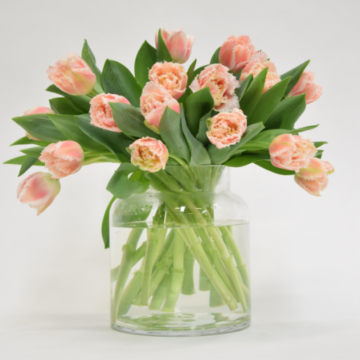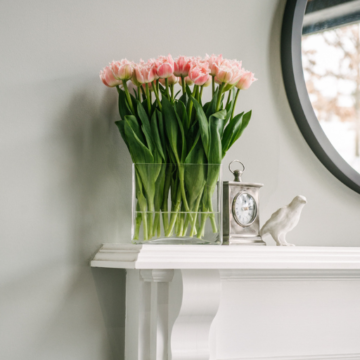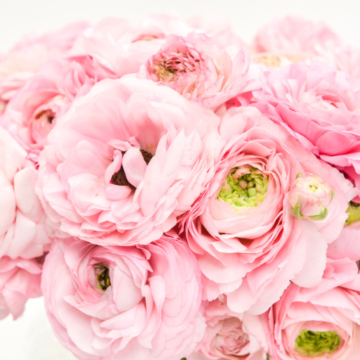Blog
Floristry 101: The Do’s And Don’ts Of Caring For Fresh Stock

When it comes to fresh flowers, I like to compare the preparation of fresh stock to a room being painted. When painting, the preparation of the walls often takes longer than the actual painting of the room itself; however, this results in a far superior finish. Therefore, by taking the time to prepare your blooms carefully, you and your customers will be rewarded with fresh, beautiful, long-lasting flowers to enjoy.
Once you have received your fresh stock, whether you have purchased it from the market, collected it from the grower, or had it delivered to your floristry studio or shop, there are several important tasks to take care of and some vital no-nos.

Do – Check off all the items
Every delivery of fresh flowers should come with a tax invoice that you can use to check off all the listed items and ensure you’ve received the correct amounts for each. Use this time to also check the condition of the flowers and foliage, ensuring the quality of the product is 100%. This way you can get back to your supplier ASAP about any product that isn’t up to scratch.
Don’t – Leave the plastic on
Usually, when flowers arrive from the wholesaler, they’re wrapped in plastic. What we don’t want to do is store the flowers still in the plastic, as this will block airflow to your blooms and allow condensation to build up, increasing the likelihood of mould or bacteria growth. Make sure to get that plastic wrap off as soon as you can and give those blooms space to breathe.
Do – Remove any broken or damaged flowers or leaves
Not only are broken and damaged flowers or leaves unsightly but leaving them in bunches of perfectly intact blooms will increase the potential for bruising or bacterial growth. You can do a quick check for any damaged material as you remove the plastic wrapping and place these blooms to the side.
Don’t – Leave any foliage/leaves below the waterline
Foliage and floral material aren’t meant to sit submerged in water for long periods of time, so any foliage/leaves that are left on the stems below where the waterline will sit in the vase need to be removed. Not only will this keep your stems clean and clear, but you’ll help to keep the water fresh and minimise bacteria growth.

Do – Use a clean bucket of the right height
You know what they say––bucket cleanliness is next to godliness! (That’s what I say at least!) Placing your beautiful new blooms into a dirty bucket is essentially undoing all the good work you’ve done to prep your flowers. Dirty buckets contain bacteria that will eat away at your flowers and rapidly reduce their total vase life. Select a bucket that has been thoroughly cleaned and correctly stored beforehand. The bucket you choose should also be of the correct height for your flowers (we don’t want them drooping!) and filled a quarter to a third of the way full with clean, fresh, cool water.
Don’t – Place flowers into buckets without re-cutting
Floral material needs a little help from us to properly soak up all that delicious water and stay hydrated. Before your place your flowers into the water buckets, re-cut each stem at an angle. This gives the stem a greater surface area to suck in all that H20 and is going to mean your flowers stay beautiful for longer.

Now, all this may seem like a long process, but it is essential to provide the appropriate care for the flowers and foliage to extend their vase life significantly.
Correct initial handling will also rehydrate the flowers, ensuring that the maximum water content is stored within the stems and leaves. This means that when the flowers are removed from the water (for delivery or when used for weddings or other events where they will remain out of water for extended periods of time), they will be fully hydrated and will last longer!
As you are working with fresh materials, it is essential to understand how to maintain the product’s freshness. By putting this knowledge into practice, it will maximise the lasting qualities of each flower and foliage.
If you’re a budding florist and on the hunt for more essential floristry business knowledge like this, go ahead and check out our Career Change Course. It’s a go-at-you-own-pace, fully comprehensive floristry career course that sets you up for a long and successful life as a florist.

